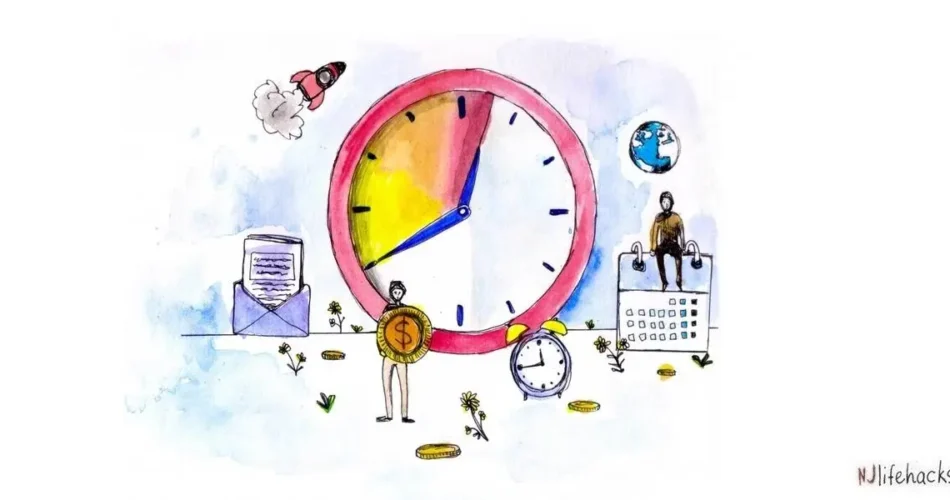You step into the new day hopeful and energized, but by evening you feel drained, wondering: “Where did my time go?” The hours blurred, tasks overlapped, and before you knew it, the day slipped away. It is not uncommon to feel like time is slipping through your fingers. But with the right structure and strategy, you can take control of your hours, reclaim your focus, and actually save time in your daily routine.
The key lies in organizing your day around your priorities, automating what you can, protecting your focus, and building habits that serve you. This article will guide you step by step on how to organize your day to save time, equipping you with both mindset shifts and actionable routines.
Why Effective Daily Organization Actually Saves Time
Before diving into techniques, it helps to understand how planning your day well actually yields more time. Without structure, your mind spends energy deciding what to do next. You’re more susceptible to distractions, interruptions, and low value tasks creeping in. Every pause, context switch, or unplanned task eats away at productivity.
When you organize your day with intention, you:
Reduce decision fatigue, because many choices (when to do what) are pre-decided.
Align your energy with the right tasks at the right times.
Prevent low level tasks from bleeding into your deep work time.
Create margins for rest, recovery, and flexibility.
Over weeks and months, those saved minutes compound into hours. The goal is not merely to fill your day but to free it, so your energy serves what matters most.
Step 1: Plan the Night Before
Your day’s structure begins before the sun rises. Spend 10 to 15 minutes in the evening laying out your plan. Doing this gives your morning clarity and prevents aimless drifting.
Start by writing a to do list. Then prioritize each item: which tasks are mission critical, which are supporting, which can wait or be dropped. Next, assign estimated durations to each, so you don’t overcommit. Finally, group similar tasks or cluster them by theme (e.g. meetings, calls, creative work).
When you wake up, you won’t waste time deciding what to do first your path is clear. Many productivity experts call this “pre commitment,” because you reduce indecision and get moving faster.
Step 2: Use the Right Prioritization Technique
Many days are derailed by urgent but unimportant demands email pings, last minute requests, notifications. You need a framework to differentiate what deserves your time.
One powerful tool is the Eisenhower Matrix: classify tasks into urgent/important, important but not urgent, urgent but not important, and neither.
Tasks that are both urgent and important do now.
Those that are important but not urgent you schedule.
Urgent but less important tasks you delegate or minimize.
Tasks that fall into neither you remove or postpone indefinitely.
This helps you avoid the trap of being busy while ignoring what moves you forward. You guard your time by refusing to let every “urgent” interruption take precedence.
Step 3: Design Your Ideal Daily Rhythm
Your inner clock (energy levels, focus spans) matters more than any generic schedule. Some people do deep work best early morning; others hit their stride after lunch. The aim is to structure your day based on when you are naturally most alert.
You can adopt a time blocking schedule: allocate fixed windows for types of work. For example, mornings for focused, high impact tasks; midday for collaborative or routine tasks; afternoons for creative or planning work. In the evening, allocate time for review, preparation, and rest.
This kind of block structuring prevents small tasks from overrunning your deep work slots. It also creates psychological boundaries: “this hour is for deep focus, that hour for admin.” When you guard those blocks, you protect your most productive hours.
Step 4: Use the Two-Minute Rule to Keep Minor Tasks in Check
Small tasks replying to a quick message, filing a receipt, setting a reminder can proliferate and clutter your mental space. David Allen’s Two Minute Rule is simple: if a task can be done in two minutes or less, do it immediately.
By clearing away micro-tasks on the spot, you prevent a backlog from forming. If you defer all of them, they accumulate and become a major distraction. This rule keeps your day lighter and your mind clearer.
Step 5: Batch Tasks and Avoid Task Switching
Switching between tasks drains energy and costs “re entry time” as your brain refocuses. Instead, batch similar tasks together. For instance, handling all emails in one window, returning calls in one block, doing errands consecutively.
When you group these small, related tasks, you reduce the cognitive cost of switching contexts. And because your brain is already “in the zone” for that kind of activity, you accomplish more in less time.
Step 6: Minimize Distractions and Protect Focus
Focus is fragile. Each interruption a notification ping, a message alert, background noise pulls you out of deep work mode and wastes time when you reorient. To protect your focus, you must become ruthless with distractions.
Turn off nonessential notifications during work blocks. Use full-screen or distraction free modes for writing or coding. Designate a workspace where interruptions are discouraged. Try focus techniques such as the Pomodoro method (e.g. 25 minutes work, 5 minutes break) so you maintain momentum and avoid burnout.
Also consider batching social media, checking messages only at set times, and using tools like website blockers on particularly vulnerable tasks. The fewer external interruptions, the more efficient your work becomes.
Step 7: Automate and Delegate Wherever Possible
Not every task deserves your direct involvement. The more repetitive, routine, or low-value something is, the better candidate it is for automation or delegation. This is where your time organization gains leverage.
Automation might include:
Scheduling recurring payments or bills automatically.
Using scheduling tools (e.g. for calls, social media posting).
Templates and workflows for repetitive processes.
Delegation might involve:
Having team members or assistants cover tasks at work.
Sharing household chores or errands with family.
Hiring help or outsourcing specialized tasks.
When you offload tasks that don’t require your unique attention, you free mental and temporal bandwidth for high impact work.
Step 8: Build & Rely on Habits and Routines
Routine is your silent time-saver. When you structure your day around habits, you reduce the number of decisions you need to make. Over time, the structures become automated.
Define a morning routine that sets your tone: wake, hydrate, move/stretch, review your plan. Use a work routine: always start with the most important task, check email only at scheduled times, take mini breaks at fixed intervals. End with an evening routine: reflect, review, prepare tomorrow’s plan, wind down.
As you repeat these routines, they become effortless, and your mind and body know what comes next. That consistency saves friction.
Step 9: Leave Buffer Zones and Flex Time
Even the best plans go off course meetings run long, emergencies pop up, your energy dips. Without buffer zones, your day collapses into chaos.
Leave small gaps between time blocks (5 to 15 minutes) to absorb overruns or transitions. Reserve a “flex block” in your schedule for catch-up, unplanned tasks, or rest. This margin protects your plan and keeps stress down.
Step 10: Reflect at Day’s End and Iterate
No plan is perfect at first. At day’s end, spend a few minutes reviewing:
What did you accomplish? What tasks got delayed or derailed? What distracted you? What could you improve for tomorrow?
This reflection lets you spot recurring leaks (time wasters) and gradually refine your schedule. Over weeks, you’ll weed out inefficiencies and evolve a more effective routine.
Putting It All Together: Sample Flow
To illustrate how these parts fit together, imagine your day might look like this:
You wake and have your morning routine (hydrate, stretch, review your plan). You then dive into your first deep work block, tackling the highest priority task when your mind is freshest. After 90 120 minutes you take a short break. Then you batch tasks like emails or administrative work in a fixed slot. Following lunch, you may hold meetings or calls. Later you return to creative work or planning. In late afternoon, you shift to lower focus tasks. In the evening you reflect, prepare your plan, and unwind.
If any small tasks arise during deep work that fall within two minutes, you handle them immediately or flag them to do in a batch later. You protect your focus fiercely, and if something unplanned enters your day, you slot it into a buffer zone, not into your deep work block.
Common Pitfalls & How to Avoid Them
Even with the best intentions, certain habits can sabotage your time organization:
Overloading your schedule with too many tasks.
Ignoring energy levels (forcing deep work when you’re fatigued).
Letting distractions bleed into your focus blocks.
Not adapting your plan when unexpected events occur.
Failing to reflect and iteratively improve.
When you notice a recurring issue, return to your nightly planning and evening reflection that’s how you course correct.
Final Thoughts
Time never slows down, but you can train your day to move better with you. By learning how to organize your day to save time, you aren’t making a rigid schedule, you are crafting a fluid structure that aligns with your rhythm and priorities.
Start simply: add evening planning, define a morning routine, block time for your highest value work, protect focus, and automate or delegate what you can. Over days and weeks, the friction in your day will fade, and you’ll discover hours regained.
Use this article as a blueprint. Adapt it to your energy cycles and responsibilities. With consistency and reflection, you’ll see how organizing your day becomes your most powerful time-saving tool.



